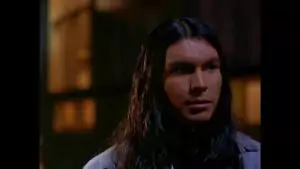![]() I love beautiful movies. If a film is eye-candy with carefully designed decorations, masterful camerawork, lighting, and architectural frames, I can forgive anything else in the movie. The lack or even absence of logic, weak dialogue and characters, cliche storylines–I can live with all that if I like what I see.
I love beautiful movies. If a film is eye-candy with carefully designed decorations, masterful camerawork, lighting, and architectural frames, I can forgive anything else in the movie. The lack or even absence of logic, weak dialogue and characters, cliche storylines–I can live with all that if I like what I see.

✅ AI Essay Writer ✅ AI Detector ✅ Plagchecker ✅ Paraphraser
✅ Summarizer ✅ Citation Generator
And I am not talking about popcorn summer blockbusters here, Marvel or DC screen versions of comics, Transformers, and so on. Perhaps, one of the best examples of what matters in a movie to me is “Ghost in the Shell”–an absolute failure in terms of succeeding its anime source in everything but visuals. I am a fan of the original cartoon, and although I did not expect much from a Hollywood adaptation, I still was not prepared for what I saw: a bleak, dull movie full of cliches and suffering from huge plot holes. The two aspects of the movie I liked, however, were the scenes copied from the anime, and the imagery. I must admit, I absolutely loved the visuals in “Ghost in the Shell.” An insanely stylish, bright, cyberpunk-ish mixture of traditional, modern, and futuristic elements in outfits. The character design amazed me so much that I rewatched “Ghost in the Shell” twice just because of how it looked.
Okay, this review is about a different film, but I just wanted to explain myself. Although cinematography is an amalgam, an alloy of different genres, they are presented in a visual wrapping. Therefore, I believe it is the visual side of a movie that must be analyzed in the first place, and which must serve as the major criterion by which a movie is evaluated.
So, with this in mind, I am finally starting the review. This whole thing is about a movie I saw recently, despite it having been released in 2016 (how slowpoke is that?). The movie is called “Neon Demon,” and I bet you have heard of it at least once. Now, before I proceed, I feel like I must stress several points. First of all, I am going to analyze the movie mostly in terms of what it looks like, not what it depicts. Secondly, I will not justify or criticize its content: to me, any good movie is an artwork, and art can only be perceived. And, “Neon Demon” is definitely a piece of art. Finally, I do not intend to moralize–neither I am going to search for hidden meaning. I made several speculations while watching, and I will share them with you in time, but I do not think “Neon Demon” hides its secrets too deeply.
The movie starts with a scene where a young model, Jesse, (as we learn later, she is only 16) poses for a fashion photo shooting for Dean, a photographer. This is her first photo shoot in Los Angeles, where she moved from a small town in Georgia to pursue the career of a model. Jesse is a beautiful, sweet girl, and she gets noticed quickly. There is only a couple of days between her first casting and her first podium walk at a prestigious fashion show.
Jesse becomes an object of admiration for makeup artist Ruby, and a competitor to Gigi and Sarah—the other two models you will be seeing in the movie a lot. Ruby is sexually attracted to Jesse, while the models envy and despise her. As Jesse realizes herself as a wanted model, she starts to behave more and more arrogantly. At the same time, she starts seeing nightmares, which become more frequent as her popularity grows. After one of such nightmares, she hears someone fidget with the lock to her motel room. She quickly locks the door, and calls Ruby–her only friend in town–for help.
The rest of the movie, Jesse lives at Ruby’s house. One day, Ruby tries to have sex with Jesse, but gets rejected violently. So, Ruby, together with Gigi and Sarah, decide to kill and eat Jesse. In the end of the movie, we see Sarah and Gigi becoming demanded fashion models, although Gigi seems to feel guilty about what they did. She tries to get rid of Jesse “inside of her,” and stabs herself with a knife. Sarah indifferently watches her friend die, and continues her photo shoot.
Now, I do realize that in my retelling, the storyline seems weird, mildly speaking. However, I do not think I have missed anything crucial. The plot is that simple: a young naive girl comes to Los Angeles, becomes popular in no time, messes with the wrong people, and gets killed. What I liked though is how the movie made me believe there was more to it. Actually, I am now thinking of the film from two perspectives that are opposite to each other.
On one side, I believe that the movie is full of metaphors. Indeed, there are fragments that made me believe the whole story was an allegory–and I think this is the way Nicolas Winding Refn, the director of “Neon Demon,” wanted the movie to be seen. The film is full of symbols. For example, one time Jesse enters her motel room, she sees a lynx–or some other big cat–and panics. As I saw this fragment, Jesse started to realize the power that lies within her appearance, her physical beauty–and yet not knowing what to do with this power, she is afraid of it. This, however, contradicts what she tells Ruby closer to the end of the movie–that she has always realized herself as beautiful, and that she always knew how her beauty affects people. But anyways, I stick to my assumption.
I liked the scene at the fashion show, when Jesse walked on the catwalk, looking at a blue neon triangle in front of her. A fragment of the show’s decoration, at some point the triangle became the symbol of Jesse’s purity: clear blue lines and colors suggest her innocence–and when you see them turn red, you realize that Jesse’s transformation (or should I say corruption?) has begun, and that success has changed her. “Neon Demon” is a reference to Jesse, after all—not anyone else in this movie.
The whole thing with cannibalism is clearly the manifestation of jealousy, envy, anger, and helplessness. In some primitive cultures, acts of cannibalism served a ritualistic purpose of consuming the strength of a fallen enemy, incorporating and assimilating his or her spiritual power. From this perspective, we can see that Gigi and Sarah achieved success: soon after they kill and eat Jesse, they become demanded by popular fashion photographers who previously did not notice them.
What I did not quite understand was the scene with Ruby in the morgue, where she had sex with one of the corpses (and yes, it looks as disturbing as it sounds). Maybe this was meant to symbolize her being rejected by the object of her passion—the way she felt like when she realized that she was not needed by such a divine creature as Jesse. Or, perhaps, this was a metaphor of her love and passion dying away. Anyways, I feel like this scene should be watched in the same way as the rest of the movie: with reasonable skepticism and a critical approach.
At the same time, it is extremely tempting for me to view the whole movie as is. Sometimes I even think that it would only benefit from it. Imagine extremely beautiful and stylish, somewhat grotesque imagery (I will return to the visual part of the movie later). Would not it be fabulous to animate such decorations with equivalently grotesque, somewhat disturbing and even morbid scenes? From this perspective, “Neon Demon” becomes a surrealistic painting, filled with subliminal, subconscious messages and taboos. Some of them are absolute–such as cannibalism and necrophilia, which are not tolerated in any civilized society nowadays. Some are more habitual, but still “spicy,” so to say: sexual harassment in show business, unrealistic beauty standards, the almost torturous procedure models have to undergo to maintain their physical appearance, the objectivation of women, and so on. If viewed without any speculation, “Neon Demon” turns into a trashy but absurd movie, weirdly mixing great music, stunning visuals, and a sick storyline into one absurd cocktail.
Speaking of how it looks like, I cannot help but applaud the artists and stylists who worked on the movie. Every frame is brilliant. The camerawork is outstanding: all the angles and foreshortening complement the mood and the context of the story, and the lighting is amazing. The whole movie balances on a ledge between neon blue and neon red colors, with these two being constantly present in the frame. Blue and red colors are in the opposite ends of the spectrum, and the nature of these colors is different in terms of physics: red has a much longer wavelength than blue. Apart from this possibly being yet another metaphor, it is also very difficult to shoot in such lighting–although it makes the movie look stunning.
As for the soundtrack, I enjoyed it so much that I found it on iTunes and downloaded the whole album. Stylish, cold, somewhat detached, and even alienated, the music in the film fits the context perfectly.
The acting was also on par. This is all I can say. I never care about the acting (unless it is absolutely amazing or totally horrible). Let us say that in “Neon Demon” it is sufficient for you to believe in what is going on on screen.
Overall, I liked the movie, although I would not watch it again. It leaves a strange aftertaste: you like what you saw, but you do not want to taste it again. The taste vanishes too quickly, and is too ethereal to grasp and recognize it. But, I think “Neon Demon” can only benefit from this circumstance.
Follow us on Reddit for more insights and updates.




Comments (0)
Welcome to A*Help comments!
We’re all about debate and discussion at A*Help.
We value the diverse opinions of users, so you may find points of view that you don’t agree with. And that’s cool. However, there are certain things we’re not OK with: attempts to manipulate our data in any way, for example, or the posting of discriminative, offensive, hateful, or disparaging material.